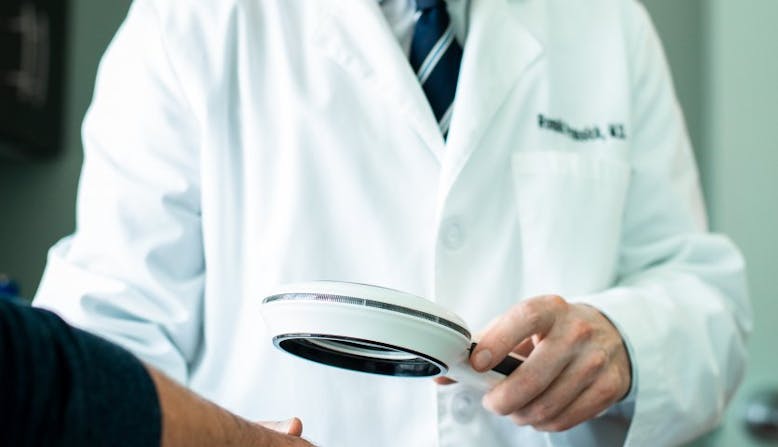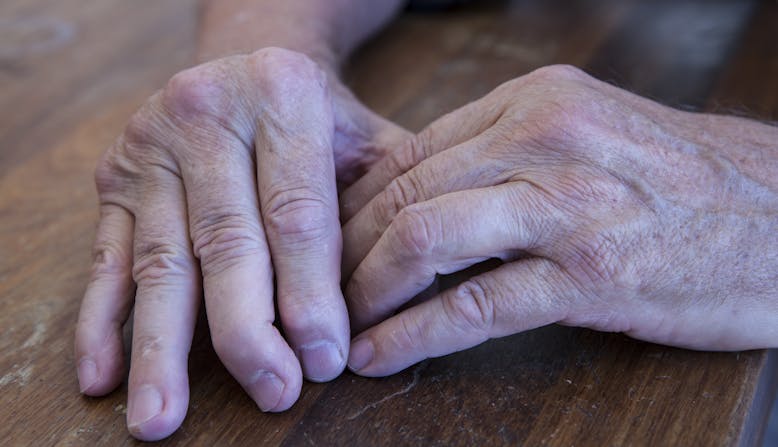PsA can involve the peripheral joints (found in your arms and legs, including the elbows, wrists, hands, and feet) or less commonly, the axial skeleton (spine, hips, and shoulders).
Spondylitis [spon-dil-I-tis]
Spondylitis is inflammation of the spinal column which affects 7 to 32 percent of people living with psoriatic arthritis. It is common in people living with psoriatic arthritis and can occur with other forms of PsA at the same time. Symptoms include inflammation with stiffness of the neck, lower back, and sacroiliac joints. Spinal arthritis makes joint motion in these areas painful and difficult.
Enthesitis [en-thi-SAI-tis]
Roughly 50 percent of people living with PsA experience enthesitis. Enthesitis refers to inflammation of entheses, the site where ligaments or tendons connect to the bones. Common locations for enthesitis include the bottoms of the feet, the Achilles' tendons, and where ligaments attach to the ribs, spine, and pelvis. This type is unique to PsA and does not occur with other forms of arthritis like rheumatoid arthritis or osteoarthritis. Enthesitis can make the tissues in the affected area become ropey (known as fibrosis) or solid (known as ossification or calcification).
Dactylitis [dak-til-AI-tis]
Dactylitis, or "sausage digits," refers to inflammation or swelling of an entire finger or toe. About 40 percent of people living with PsA experience dactylitis. It occurs due to inflammation of the small joints and enthesitis of the surrounding tendons. Dactylitis is another sign of PsA. Usually, dactylitis involves a few fingers and/or toes, but not in a symmetric pattern meaning different toes and fingers are affected on different sides of the body.


